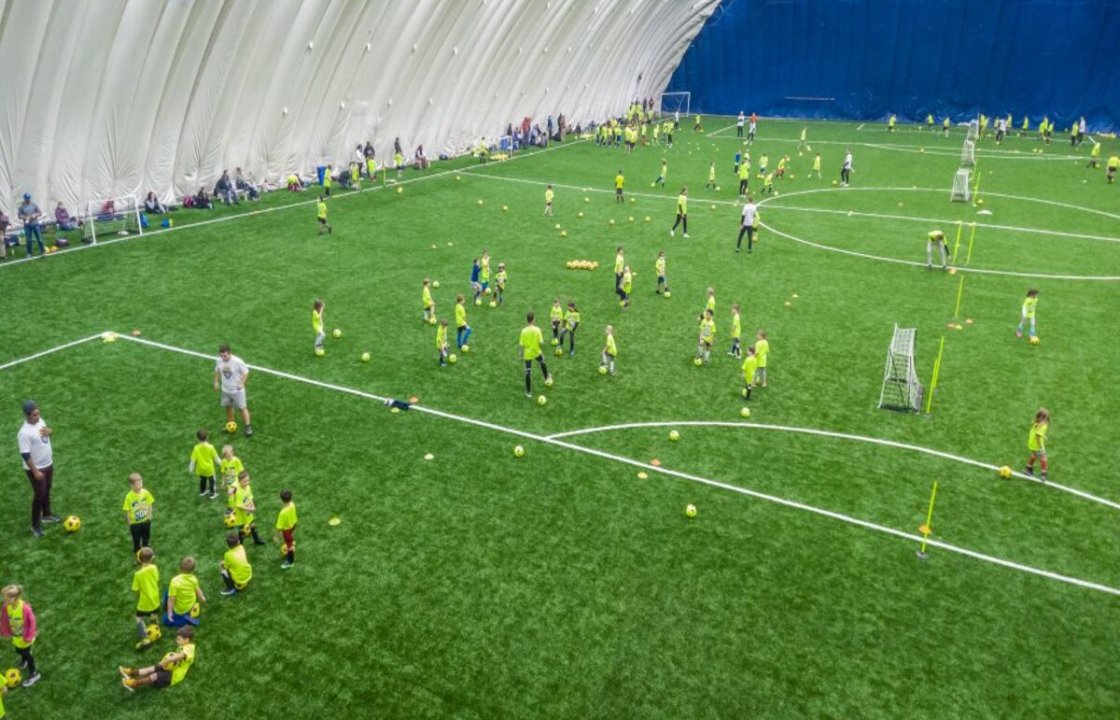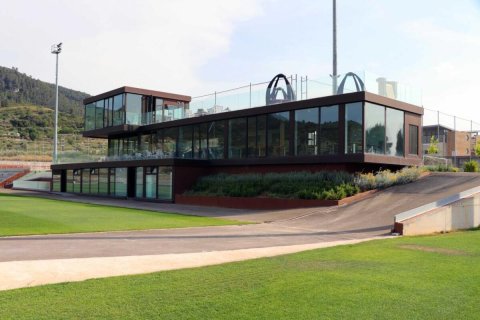The United States is transforming its soccer landscape through massive investments in infrastructure that are fueling growth, improving performance, and redefining fan experiences.
Index
A New Era for American Soccer
Over the past decade, American soccer has undergone a quiet revolution. No longer overshadowed by other major sports, the beautiful game is now taking center stage thanks to a combination of strategic planning, international influence, and a surge of interest from younger generations. However, this rise is not just about players or coaches—it's about where the game is played and how the experience is delivered. Across the country, an unprecedented wave of infrastructure expansion and modernization is reshaping the sport, from community fields to world-class stadiums.
This evolution is not happening by chance. It is the result of targeted investments that aim to create environments where athletes can train at the highest levels and fans can engage with the game in ways that match or surpass global standards. From smart stadiums to youth development centers, the physical foundation of American soccer is being laid with the future in mind.
Building the Game from the Ground Up
One of the most critical aspects of this transformation is the investment in grassroots and youth infrastructure. In many countries, soccer culture is cultivated in small, local pitches and academies. For a long time, the U.S. lacked this deeply rooted network. That is now changing. Municipalities and private organizations are investing in multi-use soccer complexes, indoor training facilities, and artificial turf fields that can support year-round play.
These facilities are not just for organized clubs—they’re for communities. By building accessible, high-quality fields, cities are nurturing the next generation of players and giving more young athletes the chance to play, compete, and fall in love with the sport. This foundational approach ensures that American soccer will have a steady pipeline of talent in the years ahead.

The Rise of the Soccer-Specific Stadium
Perhaps the most visible symbol of American soccer’s infrastructure revolution is the proliferation of soccer-specific stadiums. In the early days of Major League Soccer (MLS), teams often shared venues with NFL or college football teams. These stadiums, while large, were not built for soccer and often diluted the match-day experience for fans and players alike.
That’s no longer the case. From BMO Stadium in Los Angeles to CITYPARK in St. Louis, a new generation of stadiums has emerged, designed with sightlines, acoustics, and amenities tailored to the soccer experience. These venues often seat between 18,000 and 30,000 fans, creating intimate yet electric atmospheres that mirror those found in Europe and South America.
Beyond aesthetics, these stadiums also incorporate cutting-edge technology. High-speed Wi-Fi, massive LED screens, mobile app integrations, and even AI-powered crowd analytics are all part of the package. They are not just places to watch a game—they are immersive environments that offer fans a personalized and connected experience.
Training Like the Best
Another essential component of the infrastructure movement is the emphasis on elite training centers. MLS and USL clubs, along with youth academies and collegiate programs, are pouring resources into state-of-the-art facilities that focus on athlete performance, injury prevention, and recovery. These complexes typically include multiple pitches, indoor fitness areas, rehabilitation rooms, and performance labs equipped with the latest sports science technologies.
The goal is clear: to replicate the standards of top European clubs and elevate American soccer to global competitiveness. As the U.S. prepares to co-host the 2026 FIFA World Cup, the pressure and opportunity to develop players at an elite level are greater than ever.
Connecting Communities and Clubs
Modern infrastructure isn't just about performance—it’s about connection. New stadiums and facilities are being intentionally designed to integrate with local communities. Urban planning principles are influencing how venues are built, with an emphasis on accessibility, sustainability, and mixed-use development.
In places like Austin, Nashville, and Cincinnati, stadiums are becoming cultural landmarks, anchoring neighborhoods and creating economic growth through tourism, business development, and increased property values. Soccer is no longer a passive event; it's part of a broader community identity.
Hosting on a Global Stage
The expansion and modernization of American soccer infrastructure are also crucial for the country's ambitions on the international stage. With the U.S. set to host major tournaments, including the 2026 World Cup, state-of-the-art venues will be key to meeting FIFA’s standards and creating memorable experiences for fans from around the world.

This global spotlight brings pressure, but it also brings opportunity. It accelerates the pace of development and ensures that American cities are equipped with world-class infrastructure that will continue to serve the sport long after the final whistle of the World Cup.
Beyond the Game: The Tech Boom in Soccer
An exciting side effect of this infrastructure evolution is the rise of technology in soccer operations. Training centers and stadiums now regularly feature GPS trackers, video analytics, VR training modules, and data-driven performance metrics. These tools are enabling coaches and technical staff to make smarter decisions and develop players more efficiently.
At the same time, the fan experience is becoming increasingly digital. From ticketless entry systems to interactive fan zones and augmented reality content, the game is no longer confined to 90 minutes on the field. It's a full-spectrum experience powered by innovation.
Sustainability and the Future
As American soccer builds for the future, sustainability is becoming a guiding principle. New facilities are being designed with green building standards, including solar power, rainwater recycling, and zero-waste initiatives. Stadiums like Allianz Field in Minnesota and Q2 Stadium in Austin are setting the bar for environmental responsibility in sports infrastructure.
This commitment not only helps reduce the carbon footprint of events but also sets an example for how soccer can be part of a broader movement toward environmental stewardship.
How SIA Academy Reflects These Trends
At SIA Academy, our commitment to high-performance development directly mirrors the trends driving American soccer forward. We invest in modern, top-tier training facilities, apply technology to personalize development, and create a culture where players are immersed in both sport and education. Our focus on individualized player development, data analytics, and international scouting opportunities aligns with the infrastructure priorities seen across the U.S.
More importantly, we understand that infrastructure is more than physical—it’s philosophical. At SIA, we create the right environment to help players dream big, work hard, and succeed on and off the pitch. As American soccer continues to grow through the expansion and modernization of its infrastructure, we at SIA Academy are proud to contribute to a global standard of excellence in player development and performance.




